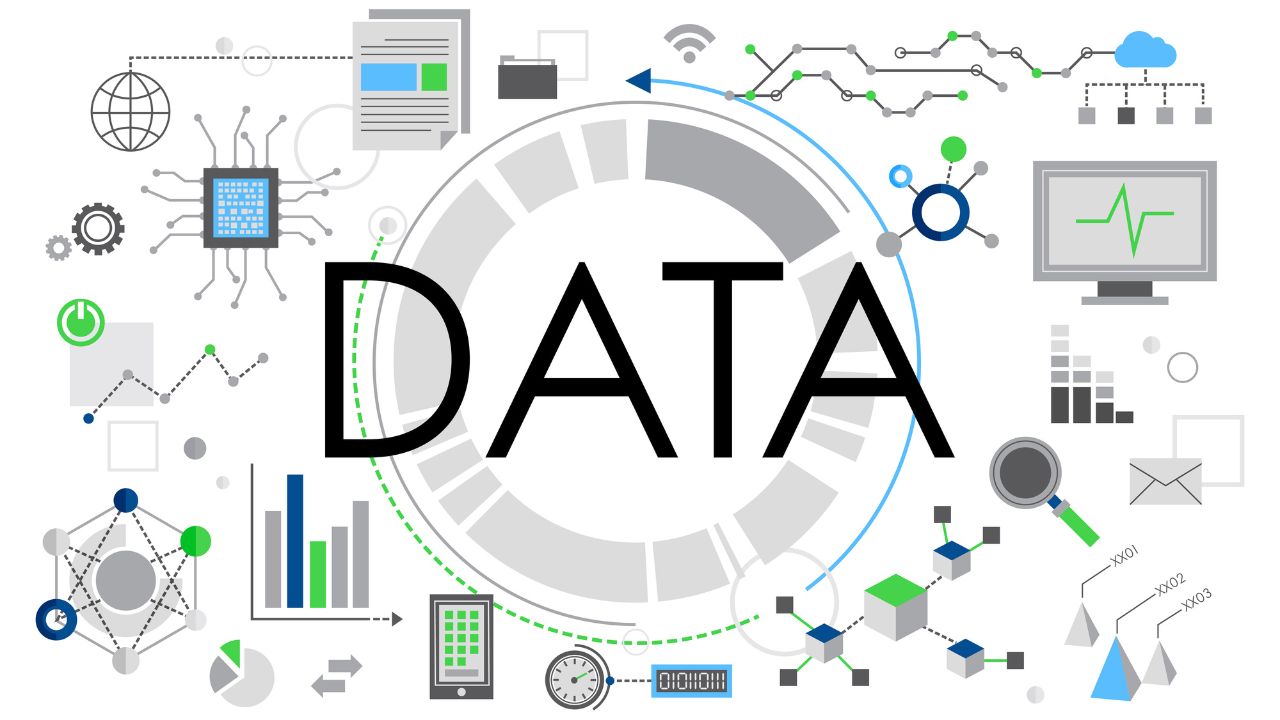Home < Blog < Mastering Language: Essential Datasets for Natural Language Processing (NLP)
Mastering Language: Essential Datasets for Natural Language Processing (NLP)
Posted on: June 21, 2025
Natural Language Processing (NLP) stands as a cornerstone of Artificial Intelligence, empowering machines to understand, interpret, and generate human language. From the simplicity of a chatbot's response to the complexity of real-time language translation, NLP applications are deeply embedded in our daily lives. At the heart of every successful NLP model lies a crucial component: high-quality, well-structured datasets. These datasets are the fuel that trains algorithms to recognize patterns, understand context, and ultimately, speak our language.
For those looking to dive deeper into the fundamental concepts and broader applications of this fascinating field, you can find more about NLP from industry leaders like IBM.
This comprehensive guide delves into the world of NLP datasets, exploring their diverse types, key characteristics, and crucial role in various NLP tasks. We'll also highlight a selection of leading datasets, including premium offerings from CrawlFeeds, that can supercharge your NLP projects.
The Indispensable Role of Datasets in NLP
Think of an NLP model as a diligent student. Without textbooks, lectures, and practice problems, even the most brilliant student cannot master a subject. Similarly, an NLP model, no matter how sophisticated its architecture, cannot learn the nuances of human language without vast amounts of annotated text data.
Datasets provide the "experience" that enables models to:
- Understand Grammar and Syntax: By observing countless sentences, models learn how words combine to form grammatically correct structures.
- Discern Semantics and Meaning: Datasets with rich contextual information help models grasp the meaning of words and phrases in different contexts.
- Identify Entities and Relationships: Labeled datasets train models to recognize names of people, organizations, locations, and how they relate to each other.
- Analyze Sentiment and Emotion: Datasets with sentiment labels enable models to detect the emotional tone (positive, negative, neutral) of text.
- Generate Coherent Text: Large text corpora allow models to learn language patterns and generate new, grammatically correct, and contextually relevant text.
The quality, size, and relevance of your chosen dataset directly impact the performance and generalization capabilities of your NLP model. A poorly chosen or low-quality dataset can lead to biased, inaccurate, or inefficient models.
Navigating the Landscape of NLP Dataset Types
NLP datasets come in various forms, each suited for specific tasks and challenges. Understanding these categories is the first step in selecting the right data for your project.
1. Text Classification Datasets
These datasets are designed for tasks where the goal is to assign a predefined category or label to a piece of text.
- Sentiment Analysis: Text is labeled as positive, negative, or neutral.
- Examples: IMDB Movie Reviews (often binary sentiment), Twitter US Airline Sentiment, Amazon Product Reviews (can be multi-class ratings).
- CrawlFeeds Relevance: Datasets like the Booking.com USA Hotel Reviews Dataset and the Trustpilot Reviews Dataset are prime examples, offering millions of real-world customer feedback records perfect for training sentiment classifiers across various industries.
- Spam Detection: Emails or messages are classified as spam or not spam.
- Examples: UCI's Spambase Dataset.
- Topic Classification: Articles, documents, or news pieces are categorized into predefined topics (e.g., Sports, Politics, Technology).
- Examples: 20 Newsgroups Dataset, AG News Corpus.
- Genre Classification: Literary works or articles are categorized by genre.
2. Named Entity Recognition (NER) Datasets
NER datasets are used to train models that identify and classify named entities in text into predefined categories such as person names, organizations, locations, dates, and more.
- Examples: CoNLL-2003 (news articles with annotated entities), OntoNotes.
- Applications: Information extraction, knowledge graph construction, content organization.
3. Question Answering (QA) Datasets
These datasets consist of pairs of questions and corresponding answers, often derived from a given context document.
- Examples: Stanford Question Answering Dataset (SQuAD) (answers are spans of text from Wikipedia articles), Natural Questions (answers are short facts or spans from web pages), TriviaQA.
- Applications: Building chatbots, virtual assistants, and search engines that can provide direct answers rather than just links.
4. Machine Translation (MT) Datasets
MT datasets are parallel corpora, containing text in one language alongside its translation in another.
- Examples: Europarl Corpus (European Parliament proceedings), WMT (Workshop on Machine Translation) datasets, Tatoeba.
- Applications: Developing translation systems, cross-lingual information retrieval.
5. Summarization Datasets
These datasets contain longer documents paired with their concise summaries.
- Examples: CNN/Daily Mail (news articles with bullet-point summaries), XSum (single-sentence summaries of news articles).
- Applications: Automatic summarization tools, content generation, news aggregation.
6. Dialogue and Conversational AI Datasets
These datasets are structured as conversations between two or more speakers, often with annotations for intent, slots, and dialogue acts.
- Examples: Cornell Movie-Dialogs Corpus, MultiWOZ (multi-domain Wizard-of-Oz dialogues), DailyDialog.
- Applications: Training chatbots, virtual assistants, and conversational agents.
7. Language Modeling Datasets
These are typically very large, unannotated text corpora used for training language models to predict the next word in a sequence.
- Examples: Common Crawl, Wikipedia, BooksCorpus, WikiText.
- Applications: Pre-training large language models (LLMs) like BERT, GPT, and T5, text generation, auto-completion.
8. Speech and Audio Datasets
While text-based, NLP often intersects with speech processing. These datasets contain audio recordings paired with their transcripts.
- Examples: LibriSpeech (audiobooks), Mozilla Common Voice (crowdsourced speech data).
- Applications: Speech-to-text, voice assistants, speaker recognition.
9. Domain-Specific Datasets
Many industries require specialized NLP models that perform best when trained on data from their specific domain.
- Examples:
- Legal NLP: CaseLaw Access Project.
- Medical NLP: MIMIC-III (de-identified medical records), PubMed abstracts.
- Finance NLP: Financial news datasets.
- E-commerce: Product reviews and descriptions (e.g., Amazon Beauty Products Dataset, Ulta Beauty Dataset).
- CrawlFeeds Relevance: CrawlFeeds excels in providing highly relevant, domain-specific datasets from various e-commerce, review, and web sources, making them ideal for specialized NLP tasks.
Key Characteristics of High-Quality NLP Datasets
Choosing the right dataset goes beyond just selecting the type. Several characteristics determine its utility and impact on model performance:
- Size: Larger datasets generally lead to better model performance, especially for deep learning models, as they provide more examples for the model to learn from. However, the quality of data is often more important than sheer quantity.
- Diversity: A diverse dataset, covering a wide range of topics, styles, and demographics, helps the model generalize better to unseen data and reduces bias.
- Quality and Cleanliness:
- Annotation Quality: For supervised learning tasks, accurate and consistent labeling is paramount. Poorly labeled data introduces noise and hinders learning.
- Text Quality: Data should be free from excessive noise, irrelevant characters, duplicates, and significant grammatical errors (unless the task is specifically about error detection).
- Preprocessing Needs: How much cleaning, tokenization, stemming/lemmatization, or stop-word removal is required?
- Relevance: The dataset must align with the specific NLP task and the target domain. Training a customer service chatbot on news articles won't yield optimal results.
- Recency/Freshness: For applications like trend analysis or competitive intelligence, up-to-date data is crucial. Language evolves, and consumer sentiments change.
- Ethical Considerations & Licensing:
- Privacy: Ensure data is collected and distributed ethically, respecting user privacy (e.g., anonymized personal information).
- Licensing: Understand the licensing terms (e.g., open source, commercial, Creative Commons) to ensure legal compliance for your project.
- Format and Accessibility: Standard formats like CSV, JSON, and plain text files are easy to work with. Accessibility through APIs or well-documented download portals is a plus.
The Power of Premium Datasets: Why CrawlFeeds Stands Out
While numerous open-source datasets are available (e.g., on Kaggle, Hugging Face Datasets), they often come with limitations:
- Lack of Specificity: Generic datasets may not contain the precise domain-specific language or entities needed for a specialized application.
- Outdated Information: Many open-source datasets are static and not regularly updated, making them less suitable for tracking real-time trends.
- Data Quality & Consistency: Annotation quality can vary, and extensive preprocessing might be required.
- Limited Scale: Free datasets often don't provide the massive scale needed for training state-of-the-art large language models.
This is where premium data providers like CrawlFeeds bridge the gap. CrawlFeeds specializes in delivering high-quality, ethically sourced, and regularly updated datasets, particularly from e-commerce platforms and review sites, which are goldmines for NLP applications.
Here's how CrawlFeeds datasets empower your NLP initiatives:
-
Real-World, Unstructured Text at Scale: CrawlFeeds leverages advanced scraping technologies to collect vast amounts of real-world, unstructured text directly from websites. This mimics the actual language environment your NLP models will encounter in production.
-
Domain-Specific Relevance: Instead of generic text, CrawlFeeds offers datasets tailored to specific industries and platforms. This means your model learns from language directly relevant to its application, leading to higher accuracy and more actionable insights.
-
Rich Metadata for Context: Beyond just text, CrawlFeeds datasets include valuable metadata like ratings, product IDs, reviewer information (anonymized), dates, and categories. This additional context is invaluable for complex NLP tasks like aspect-based sentiment analysis, review summarization, and building sophisticated recommendation systems.
-
Clean & Structured Formats: CrawlFeeds delivers data in ready-to-use formats like CSV and JSON, minimizing the need for extensive preprocessing. This saves significant time and resources in your NLP pipeline.
-
Regular Updates: For dynamic use cases like market trend tracking or competitive intelligence, CrawlFeeds offers regularly updated datasets, ensuring your models are always learning from the freshest information.
Featured CrawlFeeds Datasets for NLP
Let's highlight some specific CrawlFeeds datasets that are exceptionally well-suited for various NLP tasks:
1. Booking.com USA Hotel Reviews Dataset
- Records: 3 million+ verified user reviews
- Fields:
url, hotel_name, hotel_address, country, average_score, hotel_ranking, review_title, reviewer_name, rating, reviewer_country, negative_review_text, positive_review_text, review_text, helpful_count, reviewed_at, stayed_at, tags, source, source_domain, language, uniq_id, scraped_at - Use Cases for NLP:
- Sentiment Analysis: Analyze
negative_review_textandpositive_review_textto understand granular sentiment about specific hotel aspects. Theratingfield provides a ground truth for sentiment scores. - Aspect-Based Sentiment Analysis: Extract common themes from reviews (e.g., "cleanliness," "staff friendliness," "location") and their associated sentiment.
- Topic Modeling: Identify prevailing topics of discussion in hotel reviews.
- Text Summarization: Generate concise summaries of long reviews.
- Hotel Recommendation Systems: Use review text and tags to build content-based recommenders.
- LLM Fine-tuning: Enhance large language models' understanding of travel discourse and customer service language.
- Sentiment Analysis: Analyze
2. Trustpilot Reviews Dataset
- Records: 2 million+ verified user reviews
- Fields:
name, website, trustpilot_company_page, trustpilot_url, description, author_name, review_title, review_text, rating, reviewed_at, uniq_id, scraped_at, language - Use Cases for NLP:
- Cross-Industry Sentiment Analysis: The dataset's diverse company coverage allows for sentiment analysis across various verticals (finance, SaaS, retail, etc.).
- Brand Trust Modeling: Analyze review patterns to model and predict brand trustworthiness based on customer feedback.
- Fraud Detection in Reviews: Identify anomalous patterns or suspicious language that might indicate fake reviews.
- LLM Fine-tuning: Train LLMs on real-world opinion data to improve their ability to generate or interpret consumer feedback.
- Customer Experience (CX) Trend Tracking: Monitor shifts in customer sentiment and pain points across different industries over time.
3. Amazon Beauty Products Dataset with Ingredients
- Records: 47,000 product listings
- Fields:
asin, url, title, brand, price, availability, categories, primary_image, images, upc, manufacturer, item_model_number, package_dimensions, date_first_available, country_of_origin, color, important_information, product_overview, about_item, description, specifications, uniq_id, scraped_at, ingredients - Use Cases for NLP:
- Ingredient Extraction & Analysis: Crucially, the
ingredientsfield is a goldmine for NLP. Extract individual ingredients, identify their roles, or group them for trend analysis. - Product Description Analysis: Use
title,description,product_overview, andabout_itemfor text classification (e.g., identifying product type, target skin concern) and feature extraction. - Named Entity Recognition (NER): Identify brands, product names, and specific chemical compounds within descriptions and ingredient lists.
- Generative AI: Train models to generate new product descriptions or marketing copy based on existing successful examples.
- Semantic Search: Build a search engine that understands ingredient-based queries.
- Ingredient Extraction & Analysis: Crucially, the
4. Ulta Beauty Dataset
- Records: 33,000 product listings
- Fields:
product_name, brand_name, manufacturer_name, description, raw_description, ingredients, raw_ingredients, allergy_information, price, discounted_price, currency, availability, size, color, gender, variants, primary_image_url, additional_images, average_rating, number_of_reviews, breadcrumbs, category_1, category_2, category_3, uniq_id, version_number, sku, product_id, gtin_list, ean_list, asin, upc, summary, highlights, how_to_use, raw_how_to_use, specifications, warnings, warranty_information, product_url, site_name, country, last_updated, product_status, detected_changes - Use Cases for NLP:
- Product Feature Extraction: Leverage fields like
description,summary,highlights,how_to_use, andspecificationsto extract key product features and benefits. - Ingredient Analysis & Allergen Detection: The
ingredientsandallergy_informationfields are critical for NLP tasks focused on understanding product composition and potential risks. - Review Analysis (when combined with reviews): While this dataset focuses on product listings, combining it with review data (if available from Ulta) would enable powerful sentiment analysis tied to specific product attributes.
- Category Classification: Use
breadcrumbs,category_1,category_2, andcategory_3to train models for automated product categorization. - Competitive Intelligence: Analyze product descriptions and attributes against competitors to identify differentiation strategies.
- Product Feature Extraction: Leverage fields like
The Journey of an NLP Project: From Data to Deployment
The process of building an NLP solution typically involves several stages, with datasets playing a central role in each:
- Problem Definition: Clearly define the NLP task (e.g., sentiment analysis, NER, translation). This will guide your dataset selection.
- Data Acquisition: Source your data. This could be open-source datasets, proprietary internal data, or leveraging data providers like CrawlFeeds for specific, high-volume, and high-quality web-scraped data.
- Data Preprocessing and Cleaning: Raw text data is often messy. This stage involves:
- Tokenization: Breaking text into words or sub-word units.
- Normalization: Converting text to a standard form (e.g., lowercasing, removing punctuation).
- Stop Word Removal: Eliminating common words like "the," "a," "is."
- Stemming/Lemmatization: Reducing words to their root forms.
- Handling Missing Values/Outliers: Dealing with incomplete or erroneous data points.
- Deduplication: Removing redundant records.
- Domain-Specific Cleaning: For reviews, this might involve handling emojis, acronyms, or misspellings.
- Feature Engineering (Traditional NLP) / Representation Learning (Deep Learning):
- Traditional NLP: Creating features like TF-IDF (Term Frequency-Inverse Document Frequency) or word counts.
- Deep Learning: Using word embeddings (Word2Vec, GloVe) or contextual embeddings (BERT, GPT) to represent words as dense vectors, allowing models to understand semantic relationships.
- Model Selection and Training: Choose an appropriate NLP model architecture (e.g., Logistic Regression, SVM, Recurrent Neural Networks, Transformers) and train it on your preprocessed and represented dataset.
- Model Evaluation: Assess the model's performance using appropriate metrics (e.g., accuracy, precision, recall, F1-score for classification; BLEU for machine translation).
- Deployment and Monitoring: Integrate the trained model into an application and continuously monitor its performance in a real-world setting, retraining as new data becomes available or performance degrades.
Ethical Considerations and Responsible AI
As you delve into NLP with large datasets, it's paramount to consider ethical implications:
- Bias in Data: Datasets can inadvertently contain biases present in the real-world language they reflect (e.g., gender bias, racial bias). Models trained on such data can perpetuate and even amplify these biases. It's crucial to be aware of potential biases in your chosen dataset and employ techniques to mitigate them.
- Privacy: When working with user-generated content, ensure that personally identifiable information (PII) is appropriately anonymized or removed. Data providers like CrawlFeeds prioritize ethical sourcing and data privacy.
- Fair Use and Licensing: Always respect the licensing terms of the datasets you use. Publicly available data often has specific usage guidelines.
The Future of NLP Datasets
The landscape of NLP datasets is continuously evolving. We're seeing trends towards:
- Multimodal Datasets: Combining text with images, audio, or video to enable models to understand context across different modalities.
- Low-Resource Language Datasets: Efforts to create high-quality datasets for languages with fewer digital resources, promoting linguistic diversity in AI.
- Synthetic Data Generation: Using generative AI models to create synthetic datasets when real-world data is scarce or sensitive.
- Continual Learning Datasets: Designed to help models adapt and learn continuously from new data streams without forgetting previously learned information.
Conclusion
Datasets are the lifeblood of Natural Language Processing. The success of any NLP project hinges on the careful selection and diligent preparation of high-quality data. By understanding the diverse types of datasets available, their key characteristics, and the ethical considerations involved, practitioners can lay a strong foundation for building robust and impactful NLP solutions.
For those seeking large-scale, clean, and domain-specific textual data, premium providers like CrawlFeeds offer an invaluable resource. Their specialized datasets, ranging from millions of customer reviews to detailed product listings with ingredients, provide the essential fuel needed to train the next generation of intelligent language models, unlock deep market insights, and drive innovation across countless industries. As NLP continues to advance, the demand for ever more sophisticated and tailored datasets will only grow, underscoring their irreplaceable role in shaping the future of AI.
Latest Posts
Find a right dataset that you are looking for from crawl feeds store.
Submit data request if not able to find right dataset.
Custom request
Tags:
Nlp Datasets Natural Language Processing Data Science Machine Learning Deep Learning Text Data Data Acquisition Data Preparation Data Preprocessing Sentiment Analysis Text Classification Question Answering Llm Fine Tuning Language Modeling Ethical Ai Bias Detection Data Quality Open Source Data Big Data Information Retrieval Knowledge Graph




